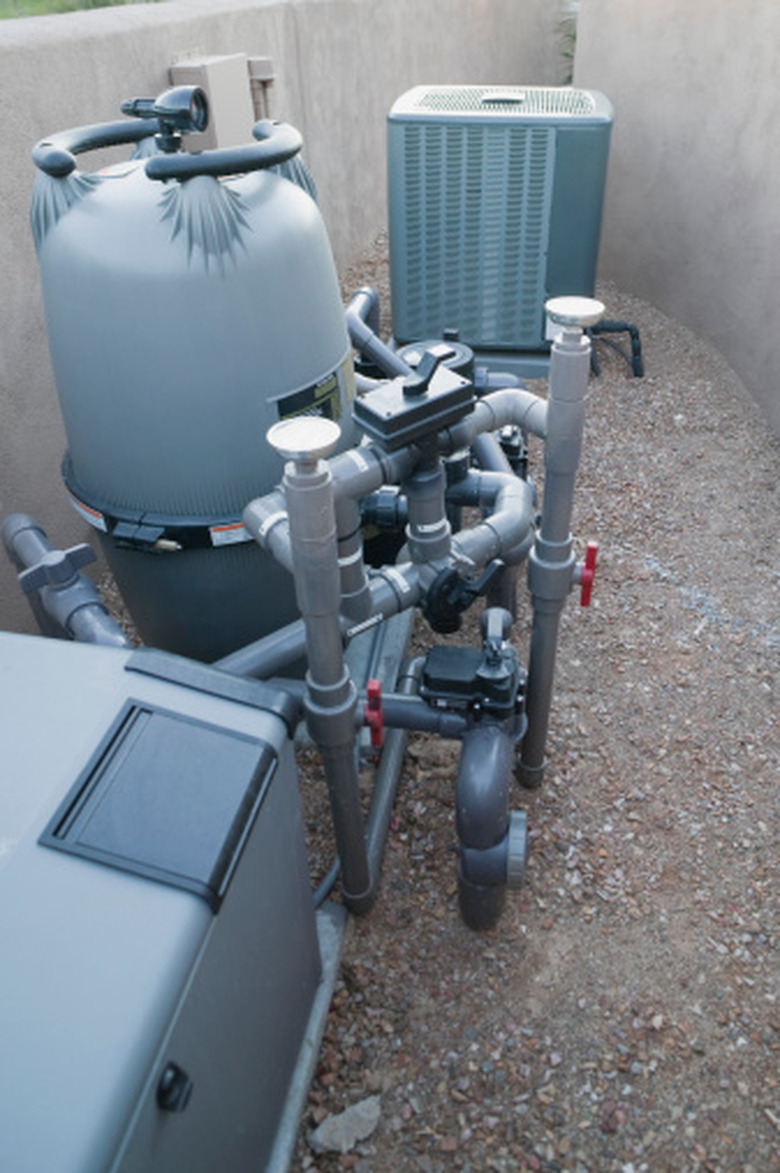Swimming Pool Piping Specifications
A swimming pool can create a backyard oasis on a hot, summer day. Using the right type and size of pipe for plumbing a pool will ensure that the oasis stays clean and bright, not sludge green or black. For proper water circulation and cleanliness, use the proper pipes for the pool.
A swimming pool can create a backyard oasis on a hot, summer day. Using the right type and size of pipe for plumbing a pool will ensure that the oasis stays clean and bright, not sludge green or black. For proper water circulation and cleanliness, use the proper pipes for the pool.
Pipe Type
The proper pipe for plumbing a swimming pool is schedule 40 PVC pipe. Schedule 40 pipe is the type of pipe used for most drain, water, wastewater and irrigation uses. According to American Society for Testing and Materials, or ASTM, standards, schedule 40 PVC pipe is resistant to most acids, halogens, salts, salts and chemicals, making it ideal for pool water filled with chlorine and other chemicals. Schedule 40 can handle temperatures up to 140 degrees Fahrenheit, a temperature pools do not reach. The thickness of schedule 40 pipe varies depending on the width. ASTM guidelines govern the minimum thickness of the pipe walls.
- A swimming pool can create a backyard oasis on a hot, summer day.
- The proper pipe for plumbing a swimming pool is schedule 40 PVC pipe.
Fittings
The fittings on PVC pipe used for pool applications must be pressure fittings. The water in a pool is in a pressurized, closed water system, and the joints need to be able to withstand pressure from 15 to 40 pounds per square inch. Be sure to ask for pressure fittings for pool applications. Use the standard PVC glue for pressure fittings and only plumbers tape on threaded fittings.
Pump Piping
The size of the pump on the pool and the amount of water in the pool will determine the size of pipe needed for piping the water to and from the pump. Typically a 1.5 inch pipe can carry about 44 gallons per minute, a two-inch pipe carries about 78 gallons per minute, a 2.5 inch pipe handles 120 gallons per minute, and a three-inch pipe moves up to 160 gallons per minute. A pipe needs to handle enough flow for the strength of the pump and enough flow to turn the water over in the pool in about six to eight hours of running the pump. A rule of thumb is that a pump under 3/4 horsepower uses 1.5 inch pipe and fittings, but a pump over 3/4 horspower uses two inch pipes.
- The fittings on PVC pipe used for pool applications must be pressure fittings.
- The water in a pool is in a pressurized, closed water system, and the joints need to be able to withstand pressure from 15 to 40 pounds per square inch.
Length of Lines
PVC lines should be as short as possible to keep water pressure up and the pump running efficiently. For a pump 3/4 horsepower, the maximum length of the pipe going from the pool to the pump is 20 feet using a 1.5-inch pipe. If it's necessary to use a longer piece of pipe, then use two-inch PVC pipe for better flow. For pumps larger than 3/4 horsepower, use two-inch pipe for any line up to 40 horizontal feet. If it is necessary to move the water farther, then use three-inch sewer/storm water pipes. However, it is best to have shorter lines if possible.
